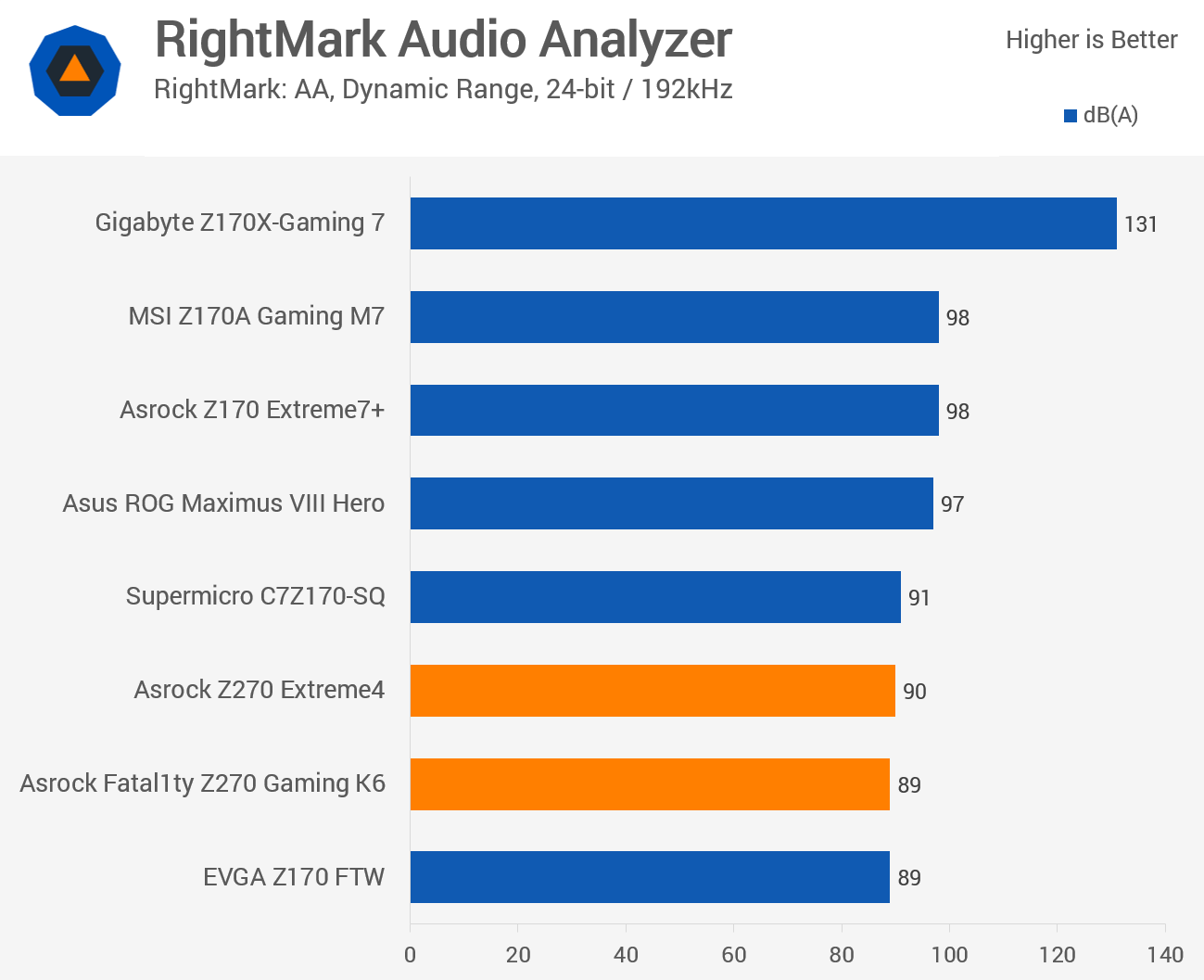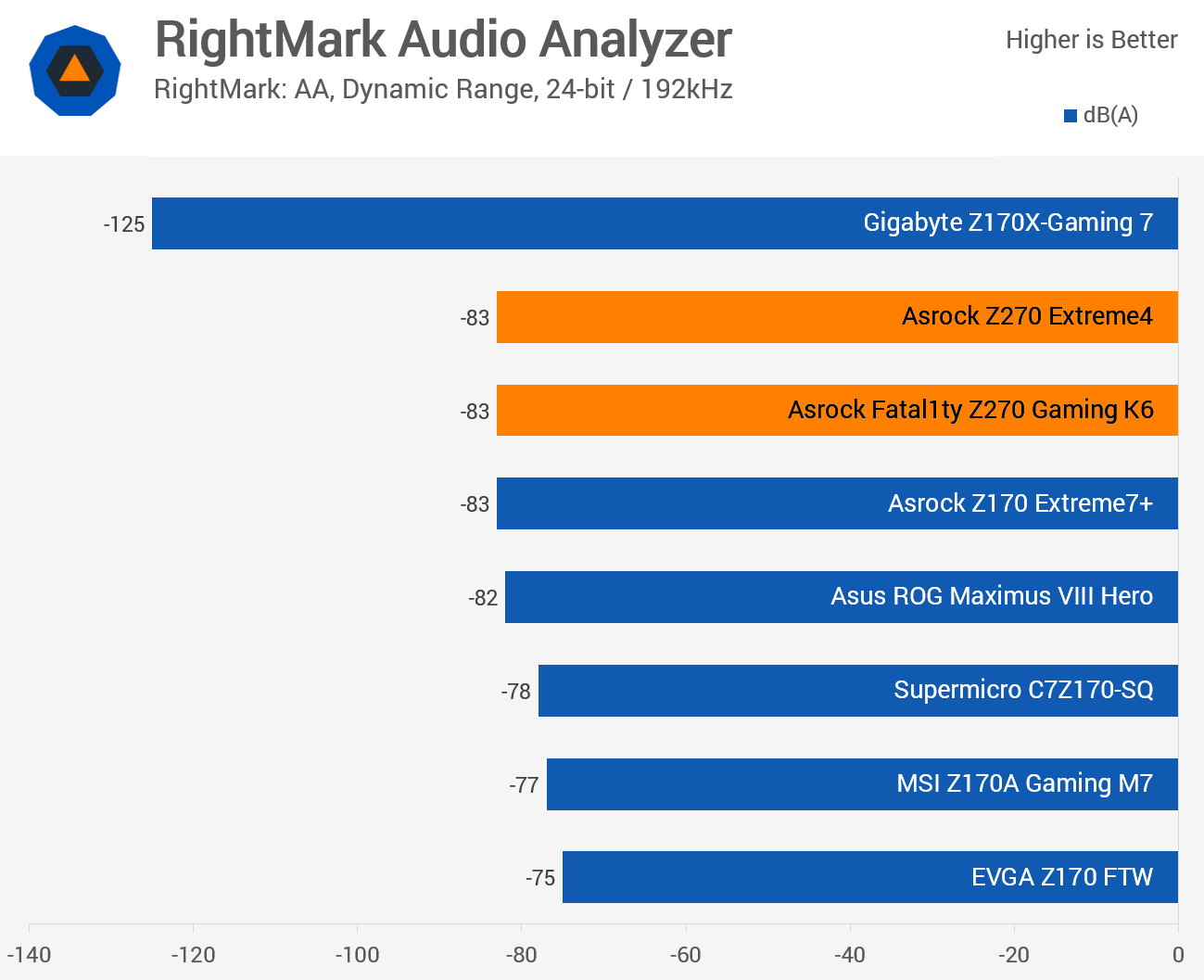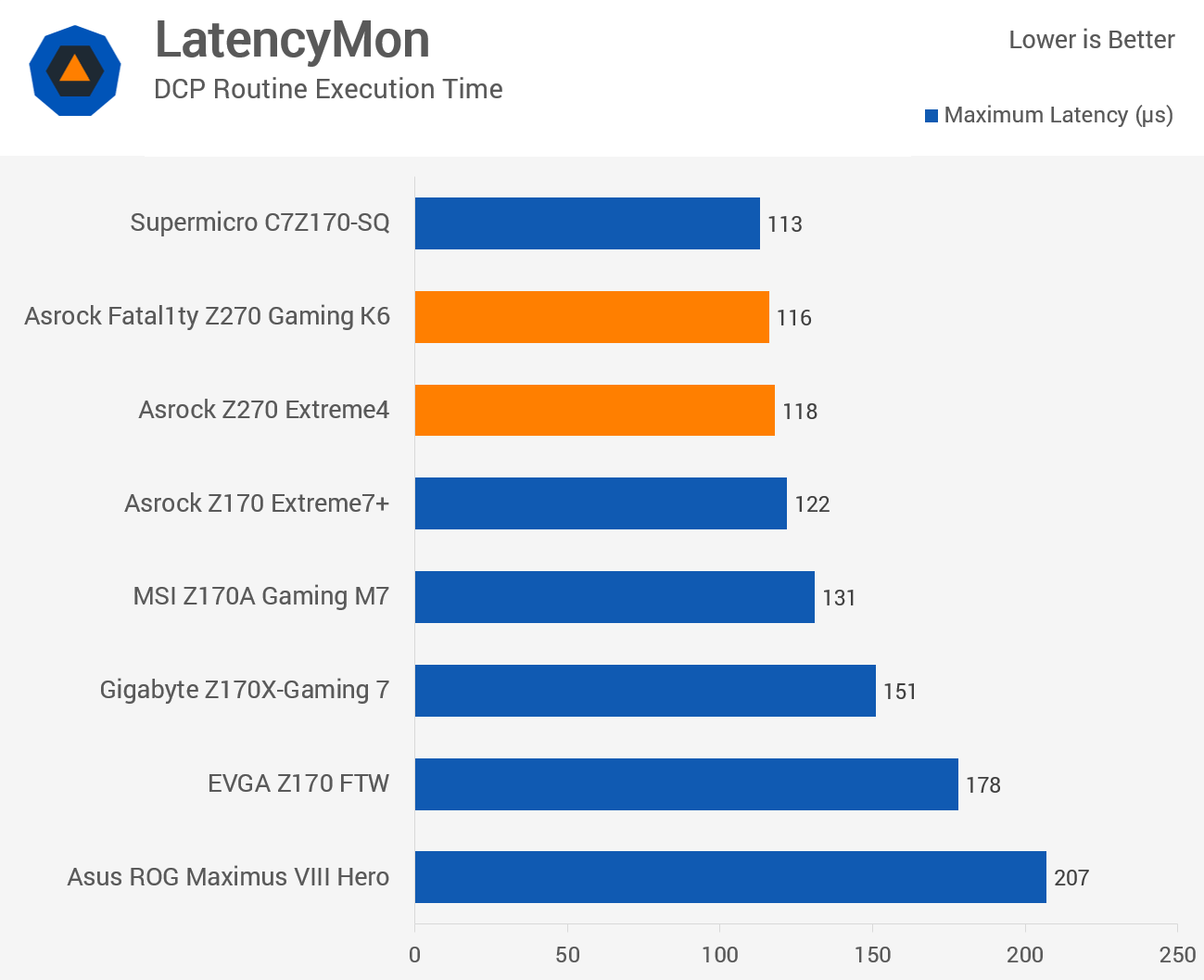General Performance
|
Skylake System Specs
|
Kaby Lake System Specs
|
There isn't much point in testing gaming performance or even application performance really as the motherboard doesn't impact anything here. That said, we ran the Excel benchmark and took a look at memory performance. The focus will be on the audio performance along with the boards latency.

The Z270 boards were tested with slightly faster DDR4 memory giving them an edge over the older Z170 motherboards in the SiSoftware memory bandwidth test. The Core i7-7700K processor which was used to test the Z270 boards is also clocked slightly higher than the 6700K.

Again the higher clocked 7700K is able to provide the Z270 motherboards with a performance advantage and both the Fatal1ty Z270 Gaming K6 and Extreme4 allowed for the same completion time of three seconds.

For the RightMark Audio Analyzer tests we connect the line out to the line in using a short six inch 3.5mm to 3.5mm high-quality jack, turn the OS speaker volume to 100%, and run the Rightmark default test suite at 192 kHz, 24-bit. The OS is tuned to 192 kHz/24-bit input and output, and the Line-In volume is adjusted until we have the best RMAA value in the mini-pretest. We look specifically at the Dynamic Range of the audio codec used on board, as well as the Total Harmonic Distortion + Noise.
As you can see, the Creative solution found on the Gigabyte Z170X-Gaming 7 provided by far the best result in the Dynamic Range test. The Realtek ALC1150 motherboards were fairly similar, though the MSI, Asrock and Asus boards did perform better than the Supermicro and EVGA boards. Asrock's ALC1220 provided decent results though given the supporting audio features list we were hoping for a bit more.

When looking at the total harmonic distortion + noise we again find that the Gigabyte Z170X-Gaming 7 is far superior to the other boards tested. That said the new Asrock Z270 boards did perform well here, matching the older Z170 Extreme7+.

Deferred procedure call latency or DPC is a function within Windows that allows higher priority tasks such as device drivers to defer lower priority tasks for execution at later times. It's an interrupt and reassignment of sorts performed by the operating system.
Users will find that DPC latency varies from brand to brand and even board to board, so while Asrock's Z170 Extreme7+ for example might have offered low latency, there's no guarantee this will be the case with the Z270 Extreme4.
DPC issues show up in the form of audio dropouts and streaming video issues, so those using their system for encoding purposes for example will find it crucial to have a motherboard capable of maintaining a low interrupt to process latency.
The good news is tools such as LatencyMon are freely available and easy to use for checking a systems latency. We ran LatencyMon for 20 minutes at which point the maximum result was recorded.
As you can see the Fatal1ty Z270 Gaming K6 and Z270 Extreme4 performed impressively here, both offering low latency.
